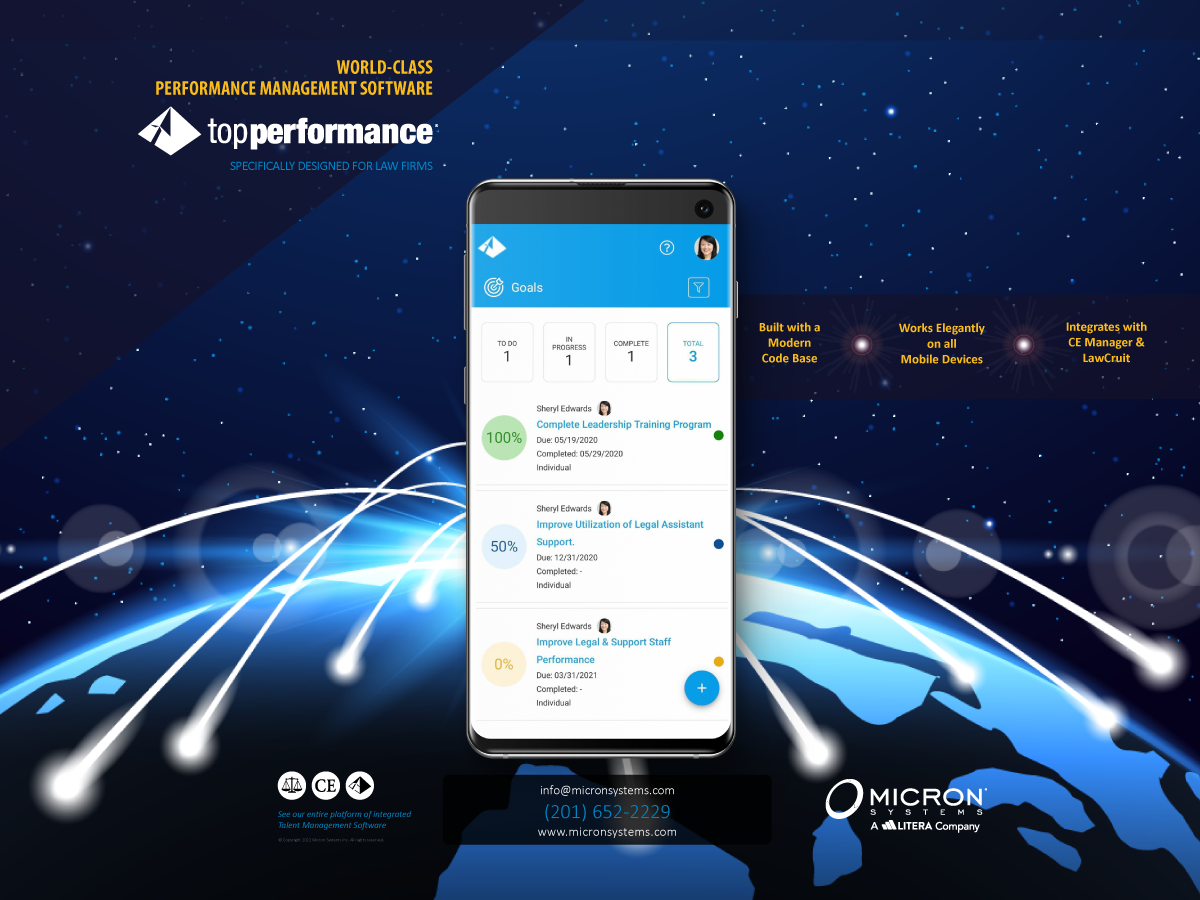However, before technology can optimally serve a law firm’s needs, the firm must think strategically to capitalize on the operational advantages and data insights technology can offer in support of the organization’s business strategies and objectives.
These measures help make that happen.
THINK STRATEGICALLY
A law firm’s strategic thinking should define and challenge its underlying core assumptions and ardently seek to uncover blind spots. It should also assess the organization’s readiness by asking:
- Who are all the stakeholders?
- What are you trying to achieve? What are your goals, objectives and criteria?
- How will you decide what to invest in, and is a budget available?
- If other departments are impacted, are they willing to change? Is there cross-organizational support and executive sponsorship?
- What does the organization and staff need to support the rollout and ensure success?
- What is the plan and its timing?
Some needs can be uncovered by looking at a firm’s vision, strategies and plans, including needs related to client matters, business processes and practice areas. Getting a handle on the full scope of needs requires input from everyone.
WHEN YOU DON’T KNOW WHAT YOU DON’T KNOW, ASK SOMEONE ELSE
Taking on a new technology is not unlike taking on a new employee. Just as human resources has a model for onboarding new hires, law firms should have a model for acquiring and deploying new technologies. Each model uses specific questions to reveal strengths and weaknesses.
In a law firm, this vetting process should gather individuals from across the organization who possess multidisciplinary expertise to “depose” the legal technology and legal technology vendor.
Why does this approach work? It’s simple. Let’s look at e-filing and service of process through the eyes of finance and accounting professionals. In doing so, you gain insights squarely related to the technology’s finance-specific features or even if not a finance solution, it may impact cost-related outcomes for the business.
In the case of data provided by a litigation support service provider, the finance and accounting staff members may unveil a system integration between the provider and the firm that can automate reconciliation and allocation of payments to clients. On their recommendation, this process becomes part of the business model which, in turn, makes the firm more efficient.
“Law firms can use data to save money and lower certain types of risk, so when you consider taking on any technology solution, you’ll want to ask questions about the data it provides.”
One Los Angeles-area law firm used this exact approach to streamline its accounting and save the equivalent cost of one full-time employee.
A critical key in using this technology strategically was the daily transfer of order and payment details from the customer relationship management (CRM) system used by the firm’s litigation support service provider directly to the law firm’s CRM.
The success was owed to involving multiple stakeholders in the planning who understood the law firm’s needs, recognized an opportunity for technology to satisfy those needs and turned to technology that met their requirements.
WHEN IT COMES TO DATA, THINK DIFFERENTLY AND THINK OFTEN
Law firms can use data to save money and lower certain types of risk, so when you consider taking on any technology solution, you’ll want to ask questions about the data it provides.
For example, data about the performance of common litigation support services such as court filing, e-filing and service of process can help gauge the performance of business partners and help firms operate more efficiently and cost-effectively.
This is where a litigation support service provider can help. They can collect these types of data and provide it to law firms in regular reports. For example, a firm can use the data in the litigation support service provider’s e-filing reports to evaluate turnaround times and rejection rates.
Similar data can be pulled from a litigation support service provider to measure service of process performance. This data enables a firm to track service level distribution, orders by type and service of process orders by pricing zone. It’s important for a firm’s business model to use these data sets as cost control measures.
The firm may also use the reports to gauge the vendor’s performance or the law firm’s own internal performance.
ONWARD AND UPWARD
Technology on its own is just an enablement, but under the guidance of a well-structured business model and involving key firm stakeholders, technology can take you to the moon and back. And, in many cases, the fuel for that trip will be data that helps you continually learn from technology and plot the course forward.


